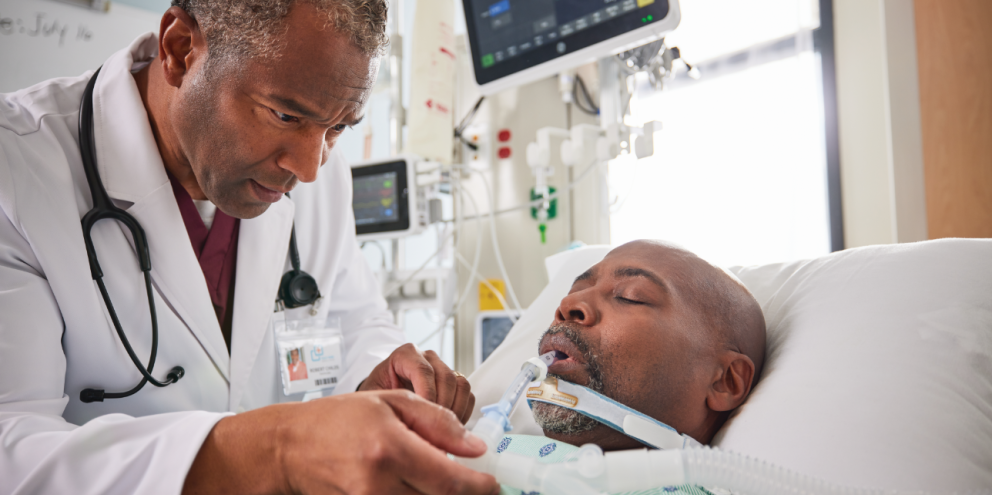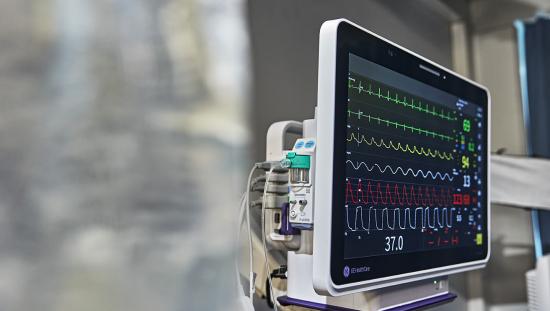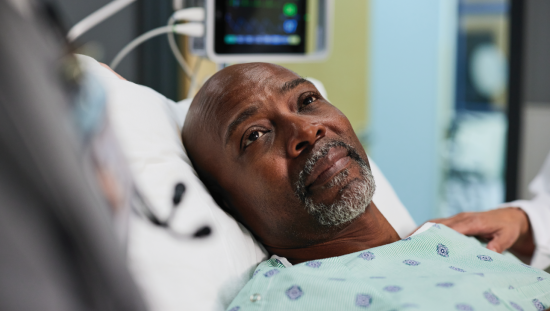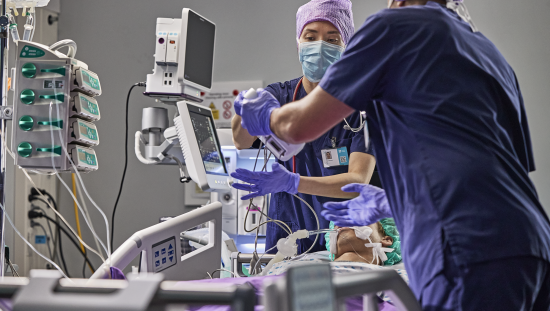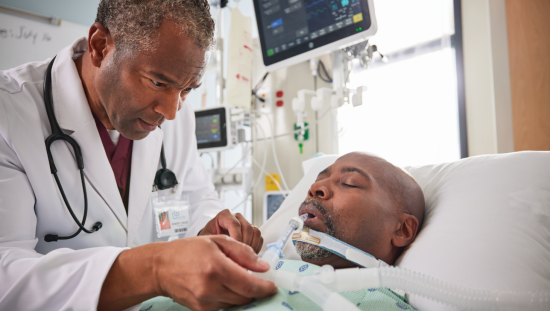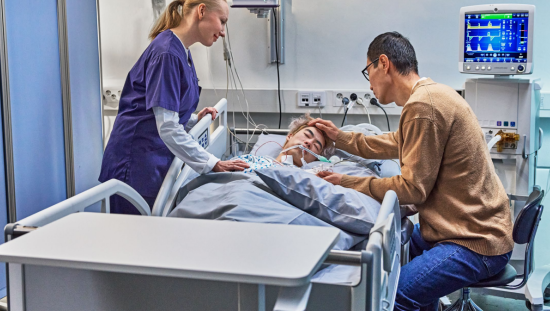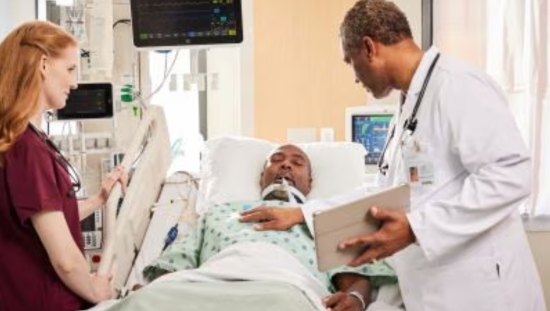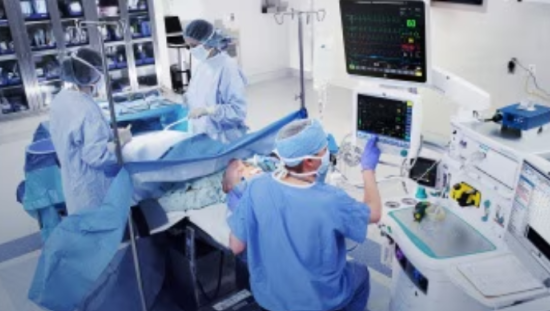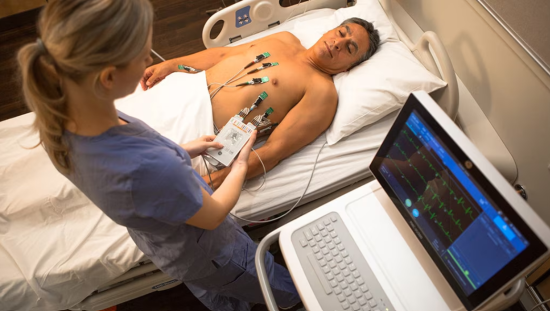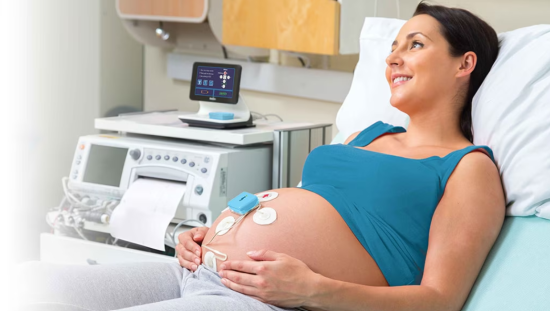The challenge: Alarm fatigue, inaccuracy, and burnout
Hospitals are inundated with alarms—many of which are false or non-actionable. This overload leads to alarm fatigue, a phenomenon where clinicians become desensitized to alerts, increasing the risk of missed deterioration and delayed responses. According to a JAMA article, alarm fatigue is a growing patient safety threat, with nonactionable alarms contributing significantly to desensitization and slower response times1.
The consequences extend beyond safety. A systematic review published in JAMA Network Open found that nurse burnout is strongly associated with lower patient safety grades, increased adverse events, and reduced quality of care2. This highlights how poor alarm management and overwhelming monitoring systems can directly impact both staff well-being and patient outcomes.
Inaccurate vital signs monitoring also poses a serious threat. A study on wearable devices in atrial fibrillation patients revealed that false positives and nonactionable alerts from wearables increased healthcare utilization without improving outcomes, raising concerns about trust and efficiency in monitoring systems3.
Better foundations, better outcomes
When monitoring platforms prioritize foundational excellence—accurate sensors, high-quality accessories, and clinically validated algorithms—the results are transformative:
- Improved clinical outcomes: Continuous monitoring has been shown to reduce ICU transfers and improve early detection of deterioration, especially during transitions from critical care to general wards4.
- Operational efficiency: Reducing false alarms and improving signal quality streamlines workflows and frees up clinician time3.
- Financial impact: Fewer unnecessary procedures and shorter hospital stays translate into measurable cost savings4.
- Staff satisfaction: Accurate and timely monitoring reduces stress and improves confidence among clinical teams5.
Vital sign trends, when reliably captured, are powerful predictors of deterioration and can enable earlier, life-saving interventions—especially in emergency and post-operative settings5.
GE HealthCare’s commitment to foundational excellence
GE HealthCare is advancing patient monitoring by focusing on what truly matters: building strong foundations in signal acquisition, algorithm performance, and clinical relevance. Here’s how their technologies are making a measurable impact:
- Alarm management: GE HealthCare's Carescape™ platform integrates customizable alarm thresholds and advanced algorithms to reduce false alarms and elevate meaningful alerts. A study at Johns Hopkins Hospital demonstrated a 43% reduction in critical monitor alarms through strategic adjustments to alarm defaults and interdisciplinary policy changes6. A white paper also highlights that 85–99% of medical device alarms do not require bedside action, contributing to alarm fatigue and clinician stress6.
- Arrhythmia detection: The EK-Pro™ algorithm exceeds American Heart Association recommendations by using four simultaneous ECG leads for arrhythmia detection. This multi-lead approach improves sensitivity and specificity, reduces false alarms, and enables contextual analysis for accurate rhythm interpretation—even in noisy environments7.
- SpO₂ accuracy: GE HealthCare’s TruSignal™ technology has been validated in multiple studies under low perfusion and motion conditions, showing accuracy levels that exceed ISO 9919 standards. In comparative testing, TruSignal algorithm maintained reliable readings across diverse skin tones and clinical scenarios, outperforming other leading pulse oximeters8.
- NIBP performance: The DINAMAP™ SuperSTAT algorithm delivers fast and accurate blood pressure measurements, even in challenging clinical conditions. It uses advanced signal processing to reduce determination time and improve patient comfort, while maintaining high sensitivity across a wide range of pulse amplitudes9.
- Respiratory rate monitoring: GE HealthCare’s TruSignal RRdv™ algorithm, used in the Portrait™ Mobile device, monitors two respiration vectors simultaneously, ensuring accurate respiratory rate detection even when one signal is compromised. This dual-vector approach supports early identification of respiratory compromise, a key predictor of clinical deterioration10.
These innovations form a cohesive strategy to elevate care quality, reduce clinician burden, and optimize hospital performance—by getting the basics right.
Conclusion: build on a strong foundation
Choosing a monitoring platform isn’t just a technical decision—it’s a clinical one. Platforms that prioritize foundational excellence empower clinicians to deliver safer, faster, and more cost-effective care.
GE HealthCare’s commitment to clinically validated algorithms, high-quality accessories, and alarm management is helping healthcare institutions build stronger systems from the ground up.
Because when the basics are right, everything else falls into place.
External clinical references
- Cvach, M. (2012). Monitor Alarm Fatigue: An Integrative Review. The Joint Commission Journal on Quality and Patient Safety, 38(3), 145–152.
- Poghosyan, L., Clarke, S. P., Finlayson, M., & Aiken, L. H. (2010). Nurse Burnout and Quality of Care: Cross-National Investigation in Six Countries. Research in Nursing & Health, 33(4), 288–298.
- Steinhubl, S. R., et al. (2018). Effect of Wearable Technology on Health Care Utilization in Atrial Fibrillation. American Journal of Medicine, 131(12), 1331–1338.
- Taenzer, A. H., et al. (2010). Impact of Continuous Monitoring on Patient Transfers and ICU Admissions. Anesthesia & Analgesia, 111(2), 505–510.
- Subbe, C. P., et al. (2003). Validation of a Modified Early Warning Score in Medical Admissions. QJM: An International Journal of Medicine, 96(10), 747–752.

